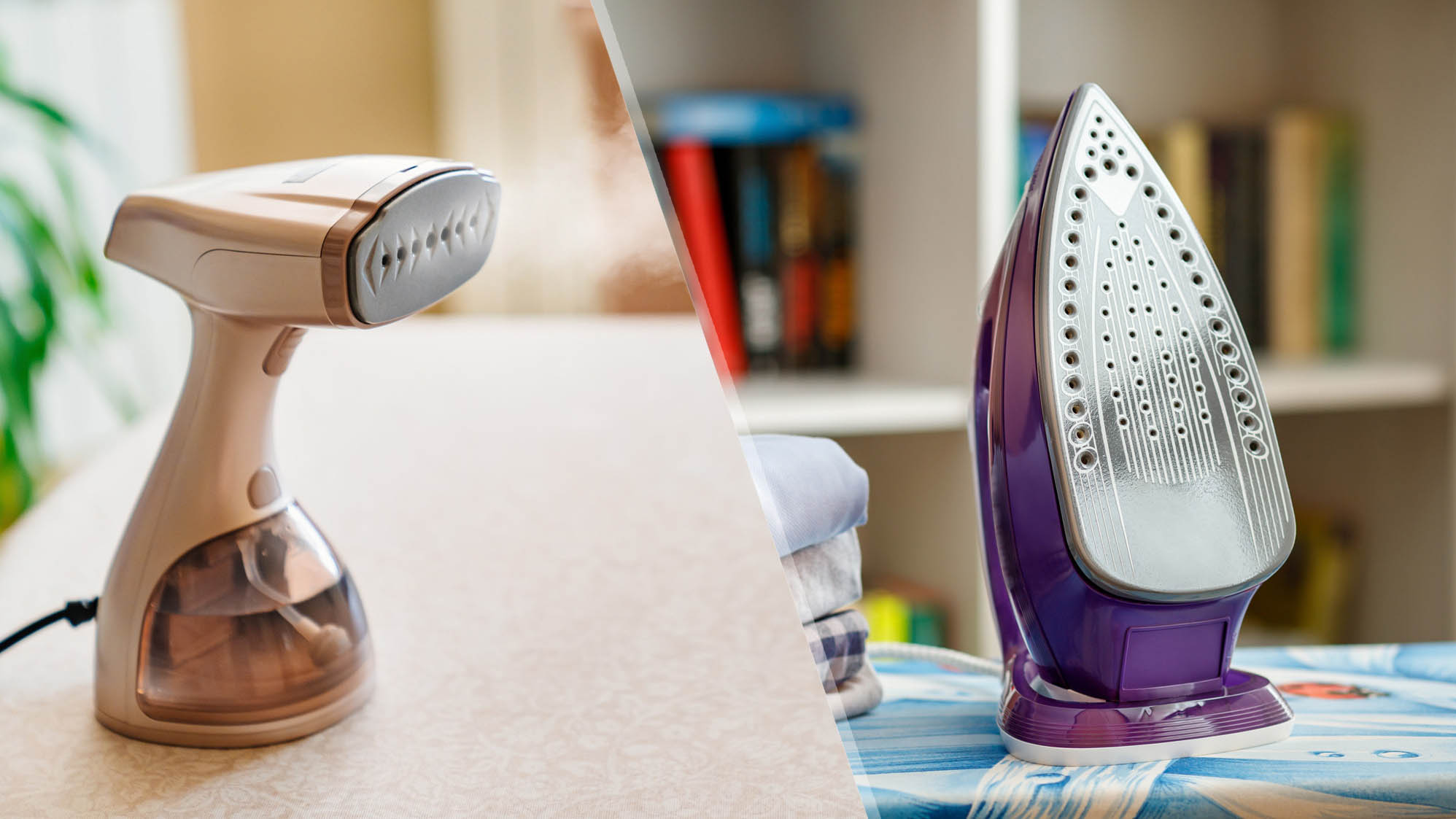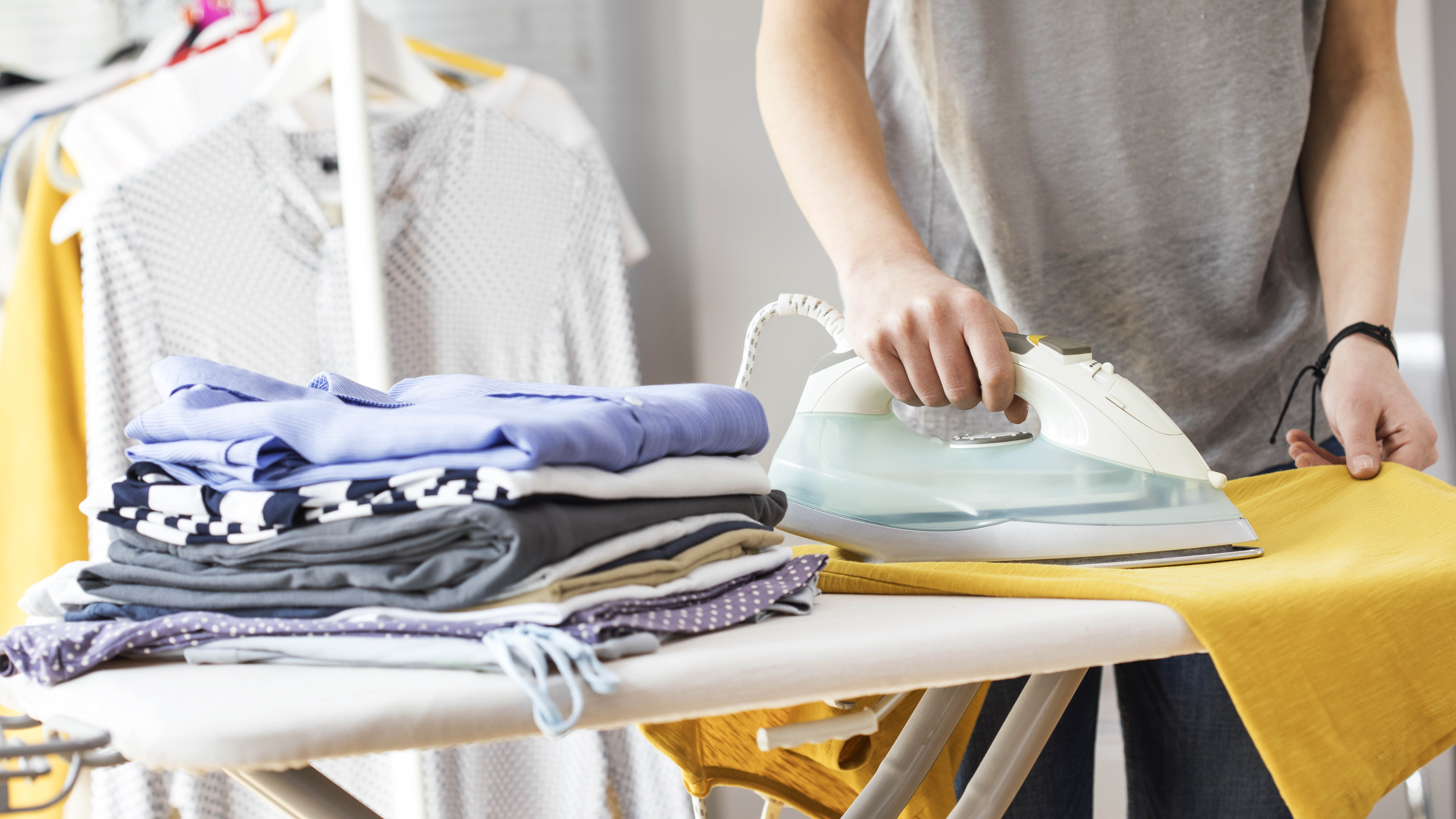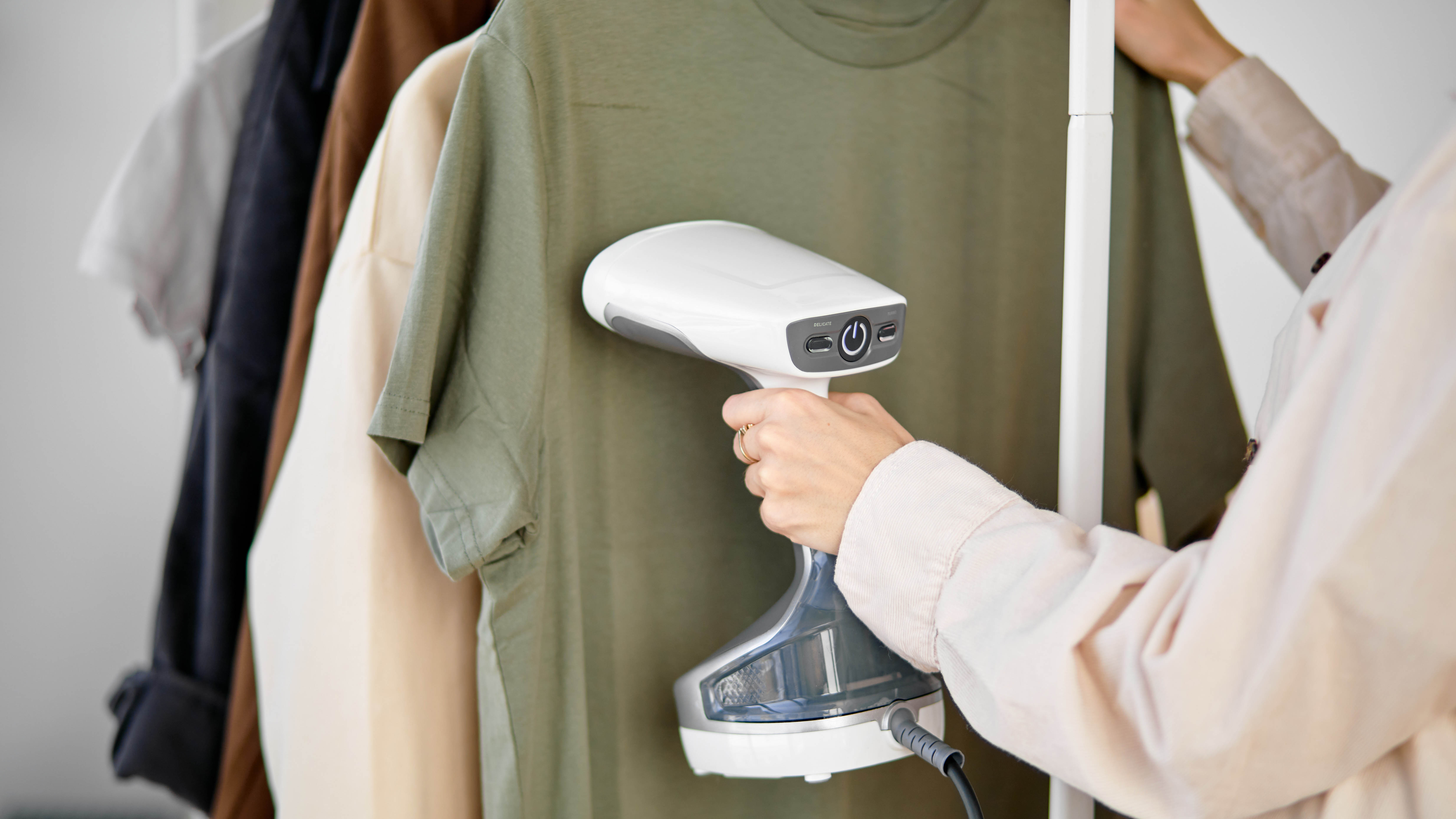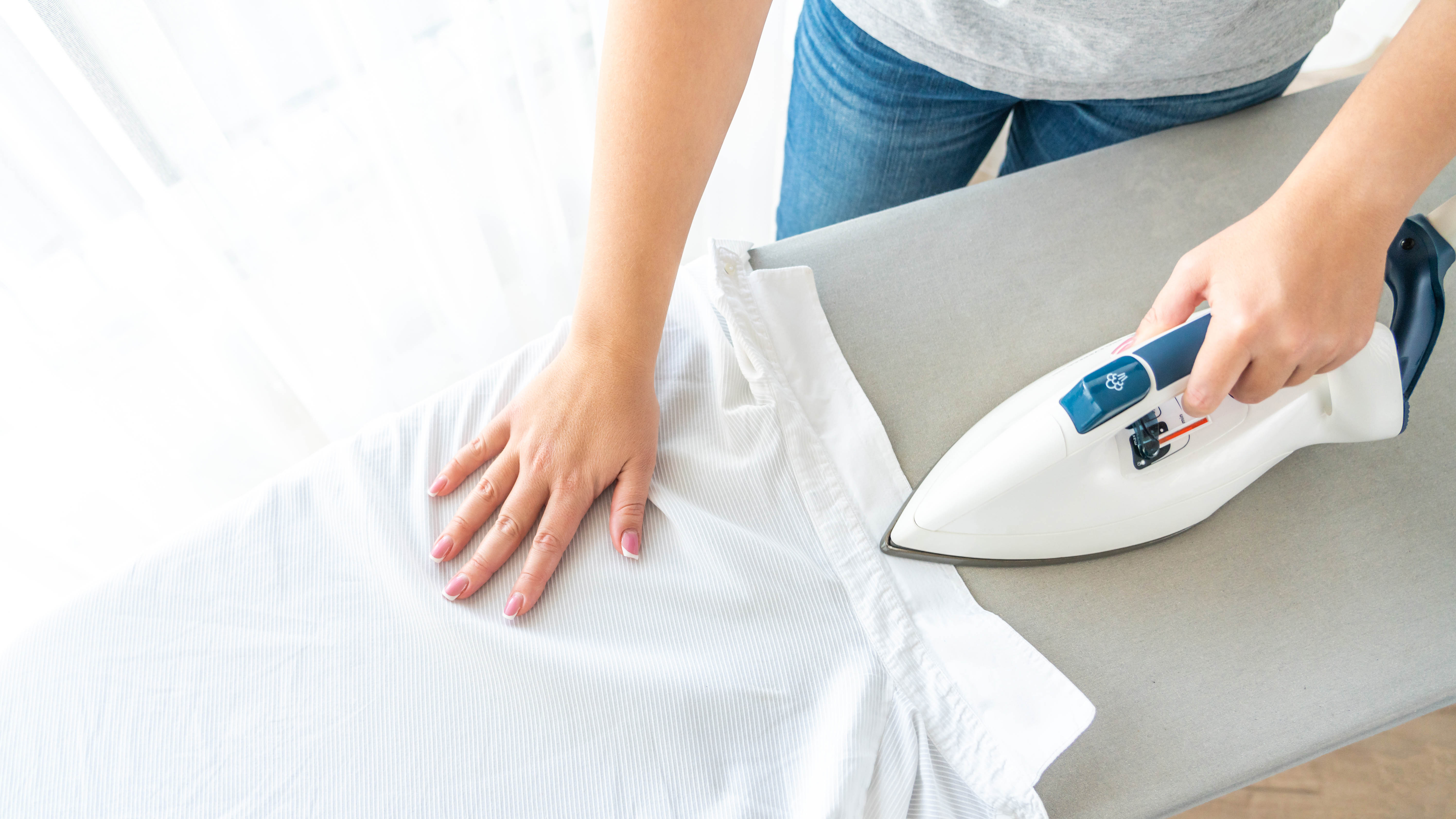Clothes steamer vs steam iron — which is best?
Here’s what you need to know when choosing between a clothes steamer and a steam iron

Anyone who wants to keep their clothes wrinkle-free would be smart to invest in a dewrinkling device. Whether you’re looking to dress up for an occasion or simply want to keep your clothes in their best condition, clothing maintenance today requires more than just a spin in the washing machine and the dryer. But should you get a clothes steamer or steam iron? Both devices are commonly available and are simple to use, but they work in different ways – with different results.
To help answer this question, we’ve created this comprehensive guide to clothes steamers vs irons that looks at the strengths and weaknesses of each product. Depending on individual needs, the best choice won’t be the same for every person. This guide is here to help identify which is the right pick for you, so that you and your clothes can be stress- and crease-free.
Clothes steamer vs. steam iron: The fundamentals

At first glance, a clothes steamer and a steam iron have a lot in common. Both are handheld devices that deploy heat to smooth out fabrics and eliminate wrinkles or unwanted creases. However, they work in different ways. While both tools utilize steam — the clue is in the name after all — the functionality of a steamer is slightly different to that of an iron.
Steamers use heat and moisture to smooth out fabrics, drawn from an attached water reservoir that is heated to a set temperature. Irons use heat and pressure from metal plates along the bottom that are warmed by electricity to achieve the same effect. Clothes steamers don’t make direct contact with the fabric and instead direct hot steam towards it, reducing the risk of heat damage but making it harder to target specific areas. Irons touch and move across the surface of the material, making them a great choice for sharp pleating or sturdier fabrics, but also more likely to harm more delicate materials.
Steamers come in a few different variations, from standing units to more portable handheld devices. Irons are more consistent in design, with most newer models offering a built-in steam feature, but they require the use of an ironing board, which is an additional purchase — and requires more space to store it.
Clothes steamer: Strengths

1. Steamers can be used on any fabric with little risk of damage, due to the delicate application of heat on the material surface. Silks, cottons and cashmeres are all steamer-friendly, making this a very versatile choice.
2. Steamers are easier to use than irons as they have a wider margin for error. Users who are de-wrinkling clothes for the first time may need to spend a little longer steaming their clothes to get the desired effect, but this won’t harm the clothes.
Get instant access to breaking news, the hottest reviews, great deals and helpful tips.
3. While standing steamers come with their own rack to support clothes, portable steamers are great for travel or on-the-go steaming needs. Neither option requires additional accessories, like an ironing board, in order to be used efficiently.
4. Most steamers will support a large range of temperature options, traditionally 200-400 degrees Fahrenheit, so that you can adjust the setting to the sturdiness of the fabric. Higher temperatures may be needed for smoother fabrics, while more delicate textiles can be protected at cooler temperatures.
5. Due to the flexibility of movement, steamers are great for use on intricate areas of clothing, like a ruched bodice.
6. Steamers take up less space than irons & ironing boards, making them a good option for anyone with limited storage.
7. You can use steamers on fabrics in the home other than clothing, such as curtains or other soft furnishings, without needing to dismantle them first.
8. There is minimal maintenance required with a steamer.
Clothes steamer: Weaknesses

1. Because the steamer doesn’t make direct contact with the fabric, it is less effective at creating sharp lines such as shirt cuffs or pleats in formal trousers.
2. Even at high temperatures, steamers can struggle to get the same results from stiffer textiles like denim or corduroy and may still leave light wrinkling.
3. In general, it takes longer to get out wrinkles with a steamer than with an iron, due to the diffused application of heat.
4. If used without caution, steamers can accidentally harm others on the other side of the garment by passing hot steam through the fabric; this is avoided with an iron, because the fabric will always be securely on an ironing board.
Steam iron: Strengths

1. Irons are very precise and therefore are the best product for creating sharp creases, reinforcing pleats and smoothing hems or cuffs. They give you greater control over the direction of heat.
2. The greater temperatures achieved with a steam iron enable it to handle tough fabrics like denim and wool.
3. That said, the range of temperatures available means that irons can also commonly be used on many lighter fabrics as well.
4. Irons are well-suited to other bulky household items like quilts or coverlets, due to their ability to handle thicker textiles.
5. Sewing projects can benefit from the use of an iron as it can press seams open and create a cleaner finished product.
Steam iron: Weaknesses

1. The heat of the metal plate can cause significant bodily harm if not used carefully.
2. Irons require the use of an ironing board, which is an additional expense and can be difficult to store in smaller spaces.
3. Delicate fabrics like silks or chiffons may be burned by the heat and pressure of an iron, requiring a separate device like a steamer.
4. Irons are much less suitable for transportation or travel, due to the need for an ironing board, although they are often available at hotels.
Clothes steamer vs steam iron: Which is better?
Choosing between a clothes steamer and a steam iron will greatly depend on the types of clothing you wear and your lifestyle habits. Anyone who owns a lot of delicate, floaty fabrics that could be burned by an iron would be smarter to go with a steamer. This is also true for people who may want to de-wrinkle their clothes while traveling or who may need a versatile device for soft furnishings in their home. Due to the different size options available, a steamer can suit a variety of needs within these parameters. It’s also a great choice for anyone who is new to clothing maintenance and who would rather start with the less risky choice.
Anyone who regularly wears suits or other tailored clothing that benefits from sharp lines and precise creasing would be better off with an iron. Similarly, those whose wardrobe is full of heavier fabrics like wool and denim will get more use out of an iron than a steamer. A steam iron is much more reliable at keeping those kinds of clothing in their best condition, reducing the need for expensive dry cleaning services. If storing an ironing board isn’t a problem, then an iron is a high-performing tool that is more exact than its steamer counterpart.
On average, most people will be served best with a steamer due to its versatility, ease of use and portability. However, if you know your wardrobe leans towards those stiffer fabrics and you feel confident in your skills, it’s the iron that will deliver the results you want. Just check your laundry labels before you start!
More from Tom's Guide

Despite making her home in urban metropolises, Madeleine Streets has been nurturing a green thumb for decades.
Raised by a garden designer, she is putting that childhood education to use by helping others learn how to make their garden bloom, while filling her own New York home with cat-friendly plants.
When not writing about gardening and the outdoors, Madeleine loves to cook, study wine and borrow books from her local library.
